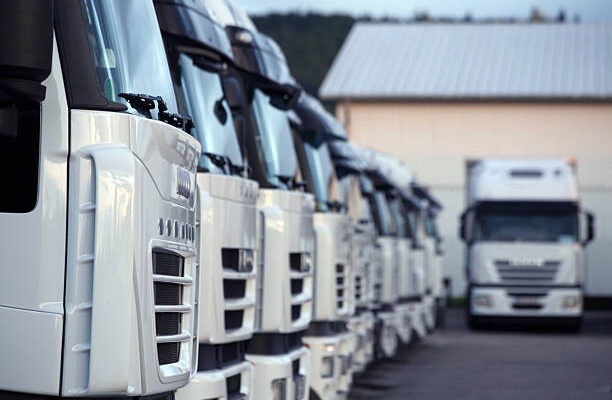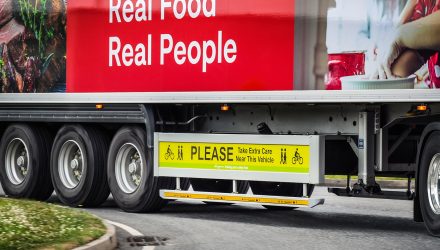As fossil fuel supplies decline and environmental risks become more evident, the haulage industry is shifting its focus toward decarbonisation. If fleet managers are to end their reliance on oil and natural gas, they must look at alternative energy sources that are less harmful to the environment. Fortunately, renewable energy from wind, water, and solar power is becoming increasingly accessible.
The introduction of electric vehicle (EV) technology has been successful in the UK, with ZapMap reporting over 1,145,000 passenger and commercial EV’s on domestic roads as of June 2024. While a fully electric delivery fleet isn’t feasible yet, now is the time to plan for this transition. Here are five steps fleet managers can take to ensure a smooth shift to an all-EV fleet.
1. Analyse your existing data
Begin by examining your company’s current operations. Gather information from your fleet telematics system on routes, vehicle load capacity, cargo, and available drivers. Evaluate the road network quality around your premises and your vehicle replacement schedule. In-house telematics data will provide rich operational insights, forming the foundation for your transition strategy.
It can take some effort to pull this information together, but once it has been compiled and analysed, you will have a detailed overview of your operations. This will significantly assist you in the remaining steps of the process. Although this analysis can be done in-house, expert assistance will yield more accurate results and a comprehensive action plan.
2. Invest in solar
Despite the UK’s reputation for limited sunlight, solar power remains a viable renewable energy source for its fleet operators and recently there has been a governmental push encouraging their installations. Labour government’s plan to invest £8.3 billion in state-owned power company Great British Energy (GBE) is set to transform the energy landscape, including the expansion of solar power. Incentives such as Investment Tax Credit (ITC), have accelerated the rate of installation further as businesses benefit from taxable deductions which ultimately reduce the overall costs of going solar.
While there are appealing tax breaks, decision makers at haulage companies must apply strategic thinking to solar power adoption. Instead of investing in just enough roof panels to overcome power outages, entire roofs should be covered. Yes, it will produce more power than you can use right now, but that won’t be the case for long as later down the line, you’ll replace your fossil fuel costs with green, renewable ‘fuel’ to operate your fleet. Your solar investment will pay off in the long run, when highway electrification becomes more feasible for toll companies, and you can invest in larger trucks that can travel longer distances with more cargo.
3. Invest in your first electric vehicles
Using fleet telematics data, identify the electric trucks and vans that best suit your business. There are affordable entry-level EVs for most commercial vehicle categories. Your initial analysis will help determine the optimal balance of internal combustion engine (ICE) and EV vehicles in your fleet as you begin transitioning.
Consider battery size, range, and charging times. Analyse your solar power production and compare it to the energy needs of various EVs. Matching supply with demand will ensure the best investment. Although your EV fleet may differ from your ICE fleet, it should ultimately produce the same results.
When it’s time to replace ICE vehicles, likely starting with smaller delivery vehicles in the one-to-four-tonne range, a greater range of EV options will be available. As EV manufacturers launch new models and improve existing ones, the affordability of these vehicles may also increase due to potential adjustments in import tariffs and duties in future government budgets.
4. Identify suitable routes
With a good understanding of your new vehicles’ capabilities, it is time to look at the most suitable routes to send them on. The first routes to be serviced by EVs will likely be loops of around 74 miles from the depot, and likely in Greater London, which has more than 20 000 EV charging points already. This will allow for two passes a day, with a fast charge after the first loop while the vehicle is being reloaded, and a full charge overnight on low-power charging.
Longer routes won’t be viable for some time as they will require charging infrastructure along major national routes, which will undoubtedly take a while to complete. However, shorter routes can reduce your fuel spend from the outset.
When the first tranche of your routes have gone electric and you’ve got new data to analyse – which routes work best, what the best charging schedule is for your business, your largest expenses and biggest savings, and so on – you can revisit your initial plan and make improvements for the next wave EVs you acquire.
5. Data management
A significant consideration of data management for EV fleets is optimising charging infrastructure. By analysing data on vehicle usage patterns, charging times, and energy consumption, fleet managers can determine the best locations for charging stations. This ensures vehicles have convenient access to charging points, reducing downtime risks due to power shortages.
Monitoring battery health, energy consumption, and vehicle performance also allows fleet managers to identify potential issues before they escalate into major problems. Electric vehicles generate vast amounts of data, which, when managed with a reliable EV fleet management system, positions your company for success in the EV era.
Anticipate further emissions regulations
The UK is currently aligned with the EU’s 2019/631 legislation, which introduced a benchmark of 15% zero and low-emission vehicles in manufacturers’ fleets by 2025. The government is likely to tighten these regulations further, meaning fleet operators must proactively introduce structural changes to remain compliant with new laws.
Transitioning to an EV fleet provides a solution to meeting these evolving emissions standards. It not only demonstrates a commitment to environmental sustainability but also offers economic benefits such as reduced fuel and maintenance costs, improved.
Author: Justin Coetzee, CEO and Founder of GoMetro






